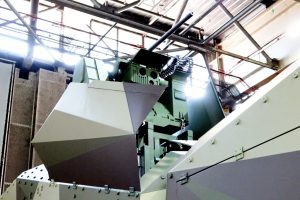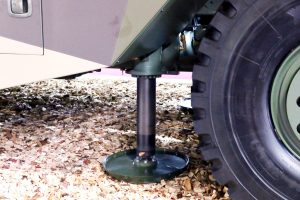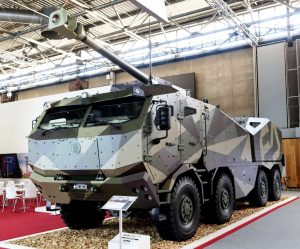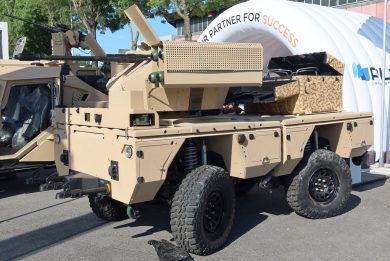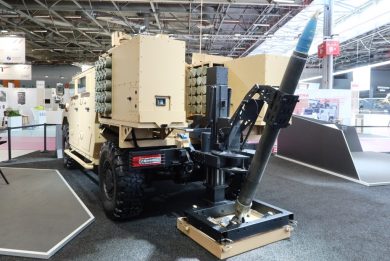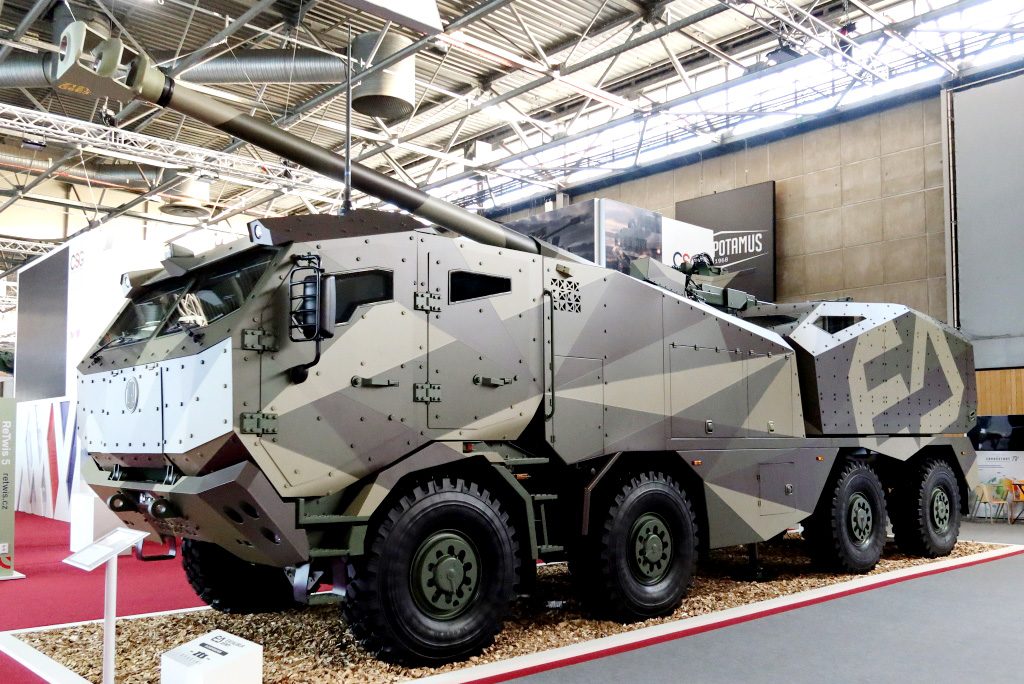
Morana: a new 52-cal 155 mm artillery system from Czech Republic
Following the unveiling of its Dita 155/45 mm self-propelled howitzer at IDEX 2021, one and a half year later Excalibur Army, the Czech company specialised in armoured vehicles and artillery, unveils at Eurosatory 2022 the Morana, based on a similar concept, with an automated turret carried on the flatbed of a Tatra 8×8 truck, but this time armed with a 155/52 mm gun howitzer.
The Morana is based on a modified version of the Tatra T815-7 chassis, the one carrying the Excalibur Army turret being wider, 3.1 meters overall with a 3 meters track, and longer, 13.2 meters overall, the system maximum height in movement configuration being 3.55 meters. The cabin has been designed from scratch in cooperation between the two companies. It has two doors per side to allow ingress and egress of the four-man crew, two in the front and two in the back. The armoured cab ensures Level 2 ballistic and Level 2 a/b protection, and is fitted with an overpressure system with NBC filtration. The front part of the cabin hosts the driver and commander, the latter being also responsible for firing missions. In the back seats we find the soldier who operates the remotely controlled weapon station, which is installed on the right side of the artillery turret, and is usually armed with a 12.7×99 mm. According to company executives this can also be fitted with a 14.5×114 mm, but considering the calibre of the main gun this would not make much sense. The rear cabin can host a fourth artilleryman; should the fully automatic loading system for ammunition and charges fail, the two artilleryman sitting in the rear can enter the main gun turret and provide manual loading, electric power being however needed to ensure turret movements, an independent electric and hydraulic power unit being fitted into the turret. All doors are activated by an electro/hydraulic system, and feature six locking points ensuring maximum tightness in case of blast.
The turret armed with the 155/52 mm gun is installed at the rear, its centre of gravity falling between axles 3 and 4. According to information obtained at Eurosatory, the gun system was developed in cooperation with ZTS Špeciál of Slovakia, that company having developed similar systems for the Zuzana 2 wheeled self-propelled howitzer. Firing can be performed in a ±60° arc towards the front, elevation arc being –3°/+70°. The autoloader contains 40 rounds and the correspondent full set of charges, however 5 more rounds and correspondent charges are stored in the turret; these would be manually loaded into the autoloader to restore maximum firing capacity during intervals in the fight. The Morana can be ready for action in 20-30 seconds, the only operation being to lower the hydraulic jacks, two in the middle of the chassis, between axles 2 and 3, and one at the rear. The commander in the front cabin gets the firing mission on its computer, the howitzer location system providing the exact position, ballistic calculation giving azimuth, elevation and charge.
The autoloader prepares the round and the full set of charges, then he system recedes to take out the exceeding charge bags, before ramming the load, close the breech and fire. The Morana can fire 6 rounds in the first minute, then 5 rounds per minute in sustained fire. It is capable to shoot in multiple round simultaneous impact mode, reaching a target at 20 km with 5 rounds. In normal mode the new Excalibur Army howitzer can reach a target at 41.5 km using a High Explosive Extended Range Base Bleed round. While its normal use is indirect fire, the Morana, as the 45 cal Dita, can be also used in direct firing, using the RCWS optics for aiming.
While the Dita is under contract ad already in production, the Morana is at prototype stage. Beside the complete system, Excalibur Army is proposing the fully independent artillery module for installation on other platforms, either wheeled or tracked.
Photos by P. Valpolini

